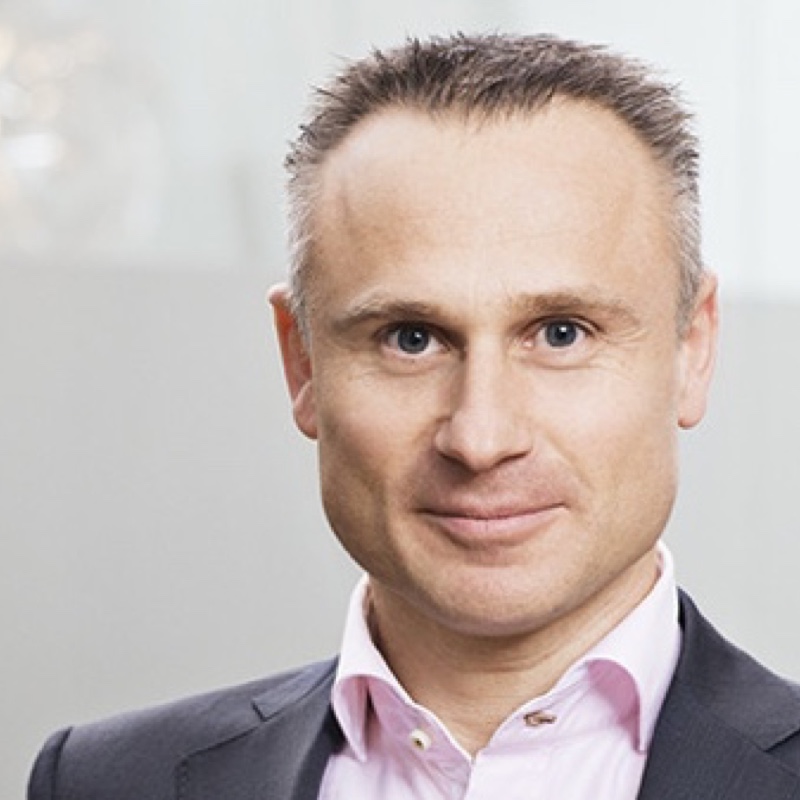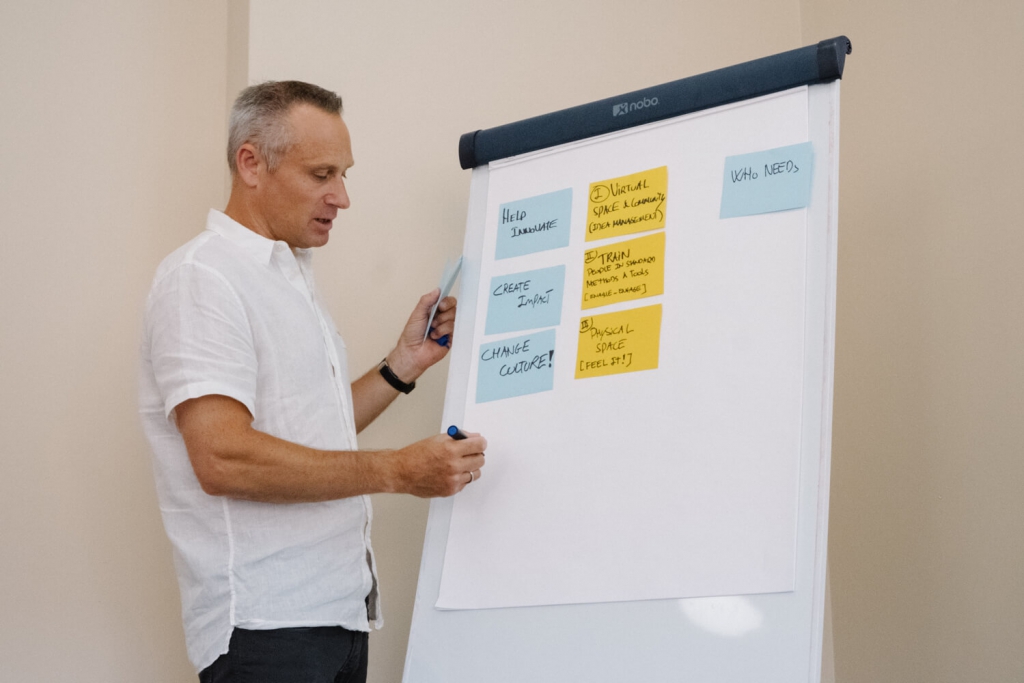
The role of innovation in reaching sustainability goals
What businesses need to do to become more sustainable and how setting sustainability goals can drive innovation.
Written by
February 10, 2022
There’s no doubt about it: Innovation is a key part of securing your company’s future. Constantly adapting to new technologies, improving current projects, and solving previously-unaddressed customer problems is the best way to ensure that you’re never left behind.
And sustainability needs to be an integral part of innovation and business planning. It needs to be anchored across the organisation. Sustainability is no longer just challenging organisations but is now a sought-after trait in modern business. Coupled with innovation, it represents a key driver of profit and long-term growth for many of today’s businesses. In fact, research indicates that Innovative businesses are 2.4x more likely to be among the strongest-performing businesses of the future.
We see three main business advantages of sustainable innovation
1. Competitive advantage
Revenues from sustainable products and services grew at six times the rate of overall company revenues. Environmental standards and changes in consumer behaviour foster innovation as well as open new business and growth opportunities.
As an example: Nike embedded sustainability into its innovation process and created the $1 billion-plus Flyknit line which uses a specialised yarn system, requiring minimal labour and generating large profit margins. Flyknit reduces waste by 80% compared with regular cut and sewed footwear. Since its launch in 2012, Flyknit has reduced 3.5 million pounds of waste and fully transitioned from yarn to recycled polyester, diverting 182 million bottles from landfills.
2. Increased financial performance.
Companies start to realise significant cost savings through operational efficiencies by better management of natural resources like water and energy, as well as minimising waste. Companies are also driving down costs by systematically managing their value chains and mitigating risks arising from climate change, resource scarcity, or community issues.
As an example: Dow has invested nearly $2 billion in improving resource efficiency and has saved $9.8 billion from reduced energy and wastewater consumption in manufacturing.
3. Talent attraction and employee engagement.
Companies with strong sustainability programs are better in employee morale, loyalty and turnover and have a significant increase in productivity over firms that did not adopt sustainability practices.
As an example: A study published by Anthesis reveals that for 53% of the UK’s workforce sustainability is an important factor in choosing a company to work for. Now, the big question on every business leader’s mind is: How do you make innovation sustainable? How do you create a culture of innovation interwoven with sustainability practices, while improving your bottom line in the process?
Here are some steps and strategies that can help you get started
1. Establish sustainability as a core company value.
Easier said than done. Everything that your company does must be interrogated as to whether it adheres to a core value of sustainability. By making sustainability part of your culture, you ensure that every decision you make already considers the environmental and ethical impacts of your actions. Every leader, manager, and employee must be aware of sustainable practices, and capable of offering sustainable ideas. And the result? An expansion of your existing culture of innovation, which weaves a sustainable mindset into every new idea.
One of the best ways to espouse this value is to involve your workforce and get them to help in developing ideas for sustainability. A great example of this was done by the company Bühler, a global, industrial solution provider for processing and manufacturing. We helped the teams at Bühler achieve their sustainability goals. Together, we designed an innovation challenge that was open to all of their employees.
Over the course of the challenge, they got input from 5,500 employees and received 341 ideas. Then, the top 8 ideas were further refined by teams in a 3-day workshop and then the Minimum Viable Products (MVPs) were produced. Some of these ideas would go on to be considered as potential offerings for Bühler’s customers.
This challenge served the dual purpose of engaging employees with sustainable and innovative practices and putting more eyes on the company’s problems to help them develop new solutions.
2. Ensure that you have clear and achievable goals.
Sustainability certainly has the potential to bring success and profit to your company, but only if you know what your specific targets are. Look at the areas in which your environmental impact may need some work, and create actionable improvement goals with set timelines.
In the Bühler challenge, the company had specific goals with timelines—30% reduction of waste and energy consumption by 2020. Having these specific goals allowed them to narrow down the scope of innovative ideas. Instead of creating unclear and vague initiatives, they had realistic and achievable goals that they could actually meet.
3. Make sustainability a part of every process.
Sustainable practices don’t just start when a product is launched, when prototypes are being created, or when the final idea is being presented. It needs to be woven into every facet of design, and every theme of innovative ideation, from the moment of inception.
If you consider sustainability targets to be an afterthought, rather than a core part of each design and workflow, then you may find that it’s difficult to achieve them at all. Think about how hard it is, once a product is launched, to change even the smallest things, such as packaging.
In the healthcare industry for example, when medical devices are being designed and developed, FDA approval is needed. Changing packaging or the like post-approval may result in a long and costly process. Therefore, it is important to think about sustainability from the start – already in R&D.
4. Make a (public) commitment—and leverage it.
Making a commitment to sustainability is not easy and it is even harder to prioritise and reach those goals. One of the reasons why commitments often fail is because they’re met with resistance from stakeholders. Oftentimes, when given a choice, they would rather pick business objectives over sustainability targets—especially if these targets are vague, unrealistic, or they experience a lack of executive support.
By making a public commitment to sustainability, with clear targets, you’re making the first steps to accountability. Publicly demonstrating your commitment to sustainability can also open up a variety of opportunities for you to engage with customers, attract new ones, and improve your bottom line.
You also set the stage for the entire company, guiding and encouraging every stakeholder and team member to focus their efforts on sustainability.
Take Covestro, for example. Covestro successfully implemented a new company culture and mission based on the experience of more than 80 years of innovative leadership. Through training in idea development and corporate entrepreneurship, they aimed to transform employees into entrepreneurs. During that process, they ran a successful innovation challenge, of which washing with CO2 was one out of five high potential business opportunities that received funding.
Innovation and Sustainability: Hand-in-Hand Towards the Future
If your company wants to grow and exist in the long term, you need to commit to sustainability across the entire value chain. Innovation and sustainability should go hand-in-hand, ensuring business goals by creating solutions and technologies of tomorrow – climate-friendly (or positive) with an overall positive socio-economic impact.
Looking at the bigger picture and saying it with BCG’s words: innovation is the only way to win the Sustainable Development Goals (SDG) race and achieve a sustainable future. Radical, disruptive innovation, in particular, can significantly shift the economics of possible solutions and the timeline for delivering them. With the potential to fundamentally change the cost of achieving progress, innovation can support and advance sustainability efforts.
At Nosco we help our clients foster a sustainable innovation culture. Through innovation challenges, workshops, and advice we help engage workforces and shape company values towards making sustainability a way of life, not just a KPI.
Innovation is a team effort—let us back you up. E-mail us or schedule a call and let’s work together to jumpstart innovation in your company.

Morten has more than 20 years of experience as a management consultant, helping Implement Consulting Group grow to the largest independent consultancy in Scandinavia. An entrepreneur at heart, he has started and grown several successful businesses and now serves as a board member to numerous start-ups.
MORE ARTICLES








